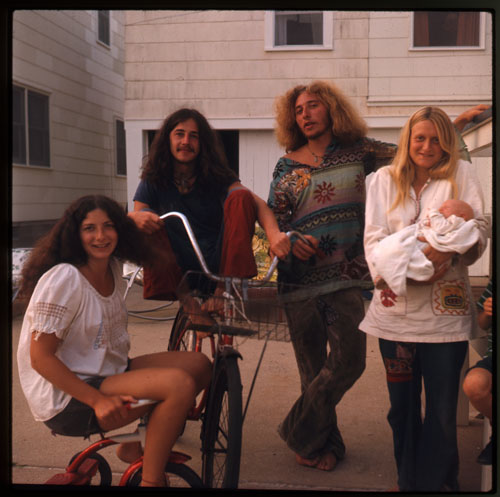Background on Roy Finestone

Chuck Light and Nina Finestone
A wave of experimentation in communal living crested in New England in the late 1960s and early 1970s, with dozens of communities springing up across the landscape of western Massachusetts and Vermont. Cheap land, exhaustion with the fractious politics of the day, and a desire to rebuild society on new principles all fueled the communitarian impulse, but to say that no commune was typical is to underestimate how atypical they could be. At least 75 communes were established in Vermont alone, reflecting varying shades of political or spiritual commitments, varying degrees of communality, and a wide range of social theories. The radicals and revolutionaries of Red Clover and the back-to-the-landers of Earthworks were all part of the same general fabric as the hippies of Tree Frog Farm, which was once said to be dedicated to "nudity, psychedelic drugs and free love." Nearly all shared a commitment to sparking change for a more egalitarian world.
Straddling the Vermont-Massachusetts border was a group of three particularly tightly knit communes that shared a common history that extends into the present. In the summer of 1968, Raymond Mungo, Verandah Porche and seven of their friends established Total Loss Farm on 90 acres in Packer Corners, Vermont. A small commune by most standards, the Farm emerged out of the vituperative split in the Liberation News Service, of which Mungo and Porche were founders. The personality of Total Loss Farm was distinctly bent toward the literary and artistic, reflected both in Porche's poetry and Mungo's memoir of his first year there, Total Loss Farm (1971).
During that same summer, Marshall Bloom, another LNS founder and refugee, established another commune just down the road in Montague, Massachusetts. Similarly anarchic in orientation, without leaders or plan, the Montague Farm had a somewhat more explicitly political flavor to it than Total Loss Farm, and several of its members were (or went on to become) prominent political and social activists. One member, Tom Fels, wrote that the Farm "was a place where you could become a new person and, we thought, create a real opening in the social fabric."
A third commune, Johnson Pasture in Guilford, Vermont, was a different story. Roughhewn, muddy, and "medieval" in appearance, Johnson Pasture had an open door policy, accepting anyone who appeared on the doorstep, and although there was a small core of committed residents, the commune did not long survive. After a faulty stovepipe ignited a fire that destroyed the commune on April 16, 1970, killing four, several residents took shelter at Montague Farm.



























![Montague Farm: 'Field in back of house,' [Montague], linking to the digital object](http://credo.library.umass.edu/images/resize/300/muph005-b001-i023-001.png)

![Montague Farm: 'John Wilton, Janice [Frey], Tony Matthew,' Montague, linking to the digital object](http://credo.library.umass.edu/images/resize/300/muph005-b001-i025-001.png)


















































































































































































































